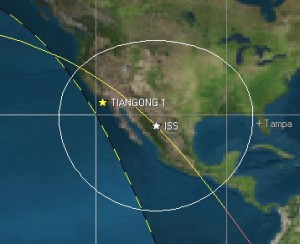In case you missed it:
We have a space station in orbit. You can see it as it passes overhead. People have lived there for over a decade. From what I’ve read, living there is a pretty magical experience.
There are two commercial companies launching regular cargo shipments to the space station, plus cargo launches by the Russian, European, and Japanese space agencies.
People still have to ride a Russian rocket to get to the space station. A few commercial companies are working on better ways to get there.
The space station has a cannon that launches small satellites into orbit, including bunches sent up on commercial cargo flights. One company is launching 30 earth-observing satellites at once, because they can.
There’s a nuclear-powered robot on Mars. She’s been there for over a year. She occasionally tweets selfies. She joined a solar-powered robot that’s been roving for over a decade. Another robot just landed on the Moon, the first one in a long while.
At least one commercial company is flight testing their passenger rocketships. Another is hot on their heels. We’re all impatiently waiting for flights to space, including hundreds of ticket holders.
One of those cargo-launch companies launched and landed the ten-story-tall first stage of its rocket. On its tail. Eight times.
An asteroid-mining company is using crowd-funded money to build their first asteroid-finding space telescope. It will also take selfies.
We now know of over a thousand planets around other stars. (You can help find more, or just get updates on your phone.) We have a photograph of at least one of them. There’s a new telescope to take photos of a lot more.
When you look up at the sky tonight, count 25 stars. (It’s easy, because there are millions in view.) One of those 25 is a Sun-like star with an Earth-sized planet in the habitable zone, according to our best estimates.
There’s more going on than I can even list in an overview. A decade ago, most of this was science fiction. Welcome to 2014, when space is awesome.

